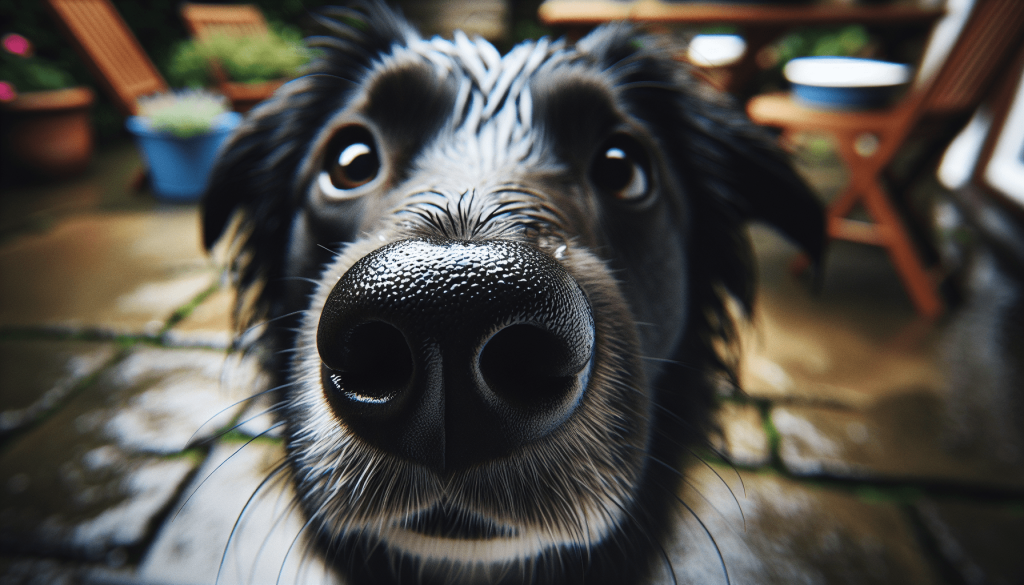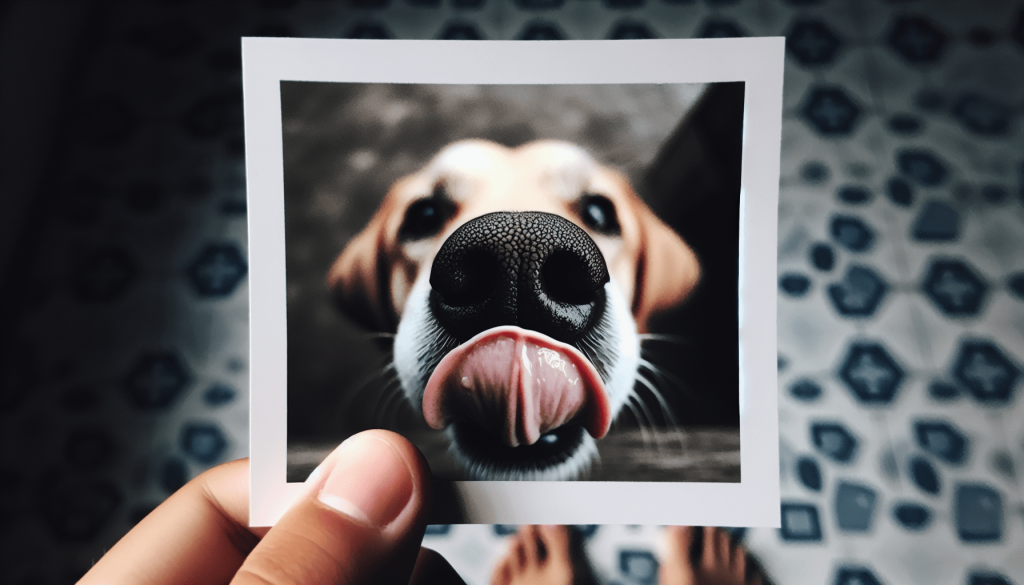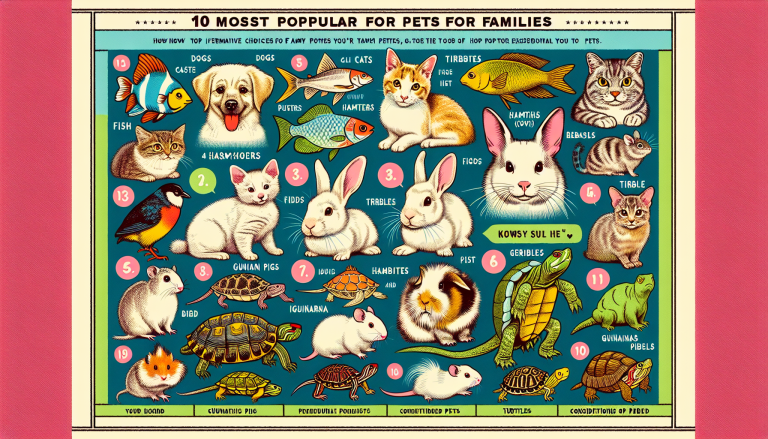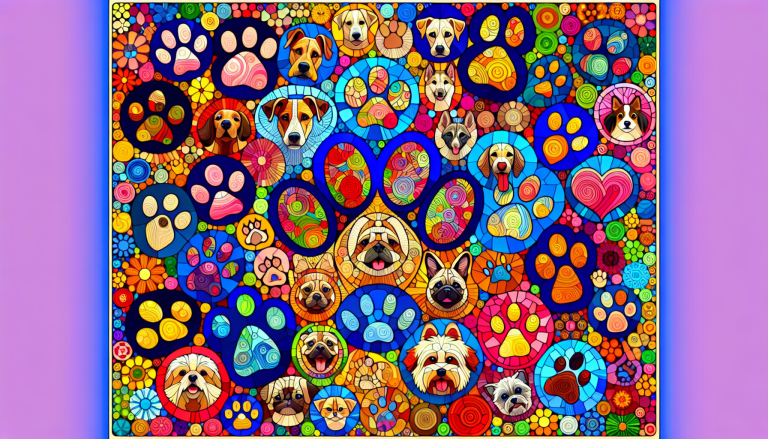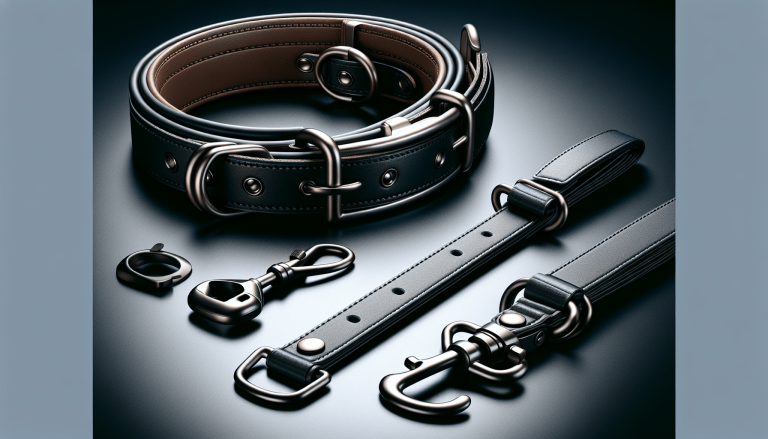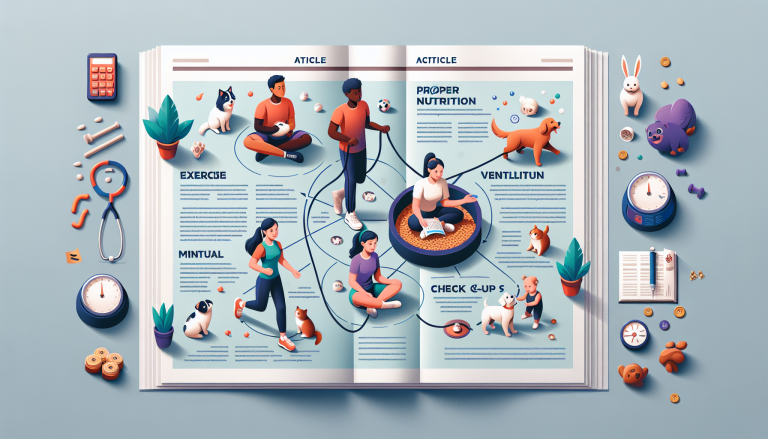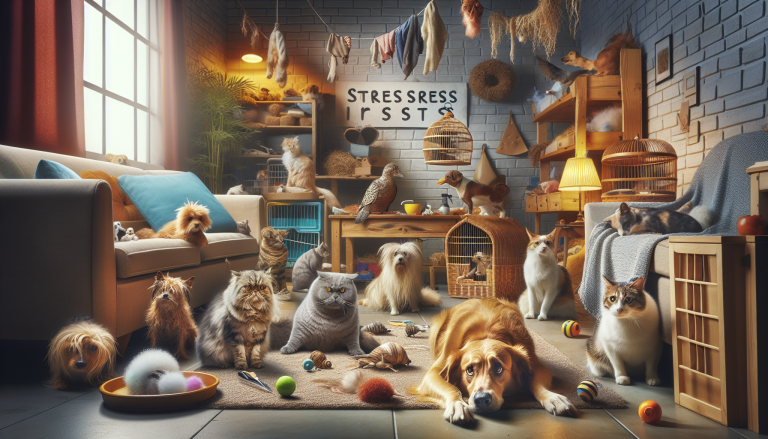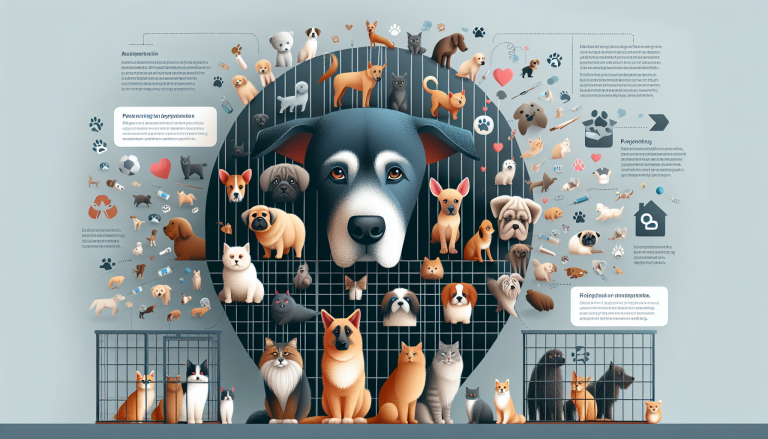You adore your furry little friend, but have you ever wondered why they constantly have that tongue out, licking everything in sight? In this article, we will delve into the fascinating world of canine behavior and unravel the mystery behind this seemingly peculiar habit. From exploring the various reasons why dogs lick, to understanding the significance behind their tongue’s relentless movements, you’ll gain a deeper insight into your beloved pet’s actions and learn how to better interpret their adorable little licks. So, get ready to discover the hidden secrets behind those wet kisses!
Table of Contents
ToggleCanine Behavior
Dogs are fascinating creatures with unique behaviors that are an essential part of their nature. One peculiar behavior that many dogs exhibit is licking. Dogs have been known to lick everything from their paws to furniture, and even their humans. So, why does your dog lick everything? Let’s delve into the world of canine behavior and explore the various reasons behind this behavior.
Dog Licking Behavior
Licking is a natural behavior for dogs and serves multiple purposes. It is their way of communicating, exploring the environment, and even self-grooming. Understanding the different aspects of dog licking can help you decipher the message behind your furry friend’s behavior.
Instinctual Behavior
For thousands of years, dogs have relied on their instincts to survive and navigate the world. Licking is an instinctual behavior that dates back to their ancestral roots. In the wild, wolf pups lick their mother’s face to communicate their needs and establish a bond. This behavior carries over to domesticated dogs, serving as a means of communication and social interaction.
Communication Method
Licking is considered a form of communication in the canine world. When your dog licks you, it can be their way of expressing affection or seeking attention. Licking is also a way for dogs to signal submission or show deference to a dominant figure. So, if your dog licks your face or hands, they may be trying to convey their emotions and strengthen their bond with you.
Exploring the Environment
Have you ever noticed your dog intensely licking furniture or other objects in your home? This behavior is often driven by their natural instinct to explore their surroundings. Through licking, dogs can gather information about an object’s taste, texture, and scent. It’s their way of investigating and familiarizing themselves with the world around them.
Reasons Behind Dog Licking
Now that we’ve explored the general motives behind dog licking, let’s dive deeper into the specific reasons why your furry companion engages in this behavior.
Hygiene and Self-Cleaning
One of the most obvious reasons dogs lick themselves is to maintain their personal hygiene. Dogs use their tongues to groom their fur, eliminating dirt, debris, and parasites. Licking also stimulates oil glands, promoting a healthy coat. So, if you notice your dog constantly licking their paws or fur, it’s likely their way of keeping themselves clean.
Taste and Food Remnants
Dogs have an exceptional sense of taste and are known for their love of food. It’s no surprise that they may lick objects or surfaces that have remnants of tasty treats. Your kitchen floor, your hands after eating, or even your furniture may attract your dog’s attention if they detect a lingering taste. It’s their way of satisfying their cravings and exploring different flavors.
Affection and Bonding
When your dog showers you with licks, it’s often an expression of love and affection. Dogs are social animals, and licking is their way of bonding with their human companions. By licking you, they release feel-good hormones called endorphins, which create a sense of pleasure and strengthen the emotional connection between you and your furry friend.
Stress and Anxiety Management
Similar to humans, dogs can experience stress and anxiety. In times of heightened emotions, licking can be a self-soothing mechanism for dogs. It releases calming endorphins and helps them cope with stressful situations. If your dog excessively licks during anxious moments, it may be their way of seeking comfort and alleviating their distress.
Puppyhood Licking
Puppies are adorable bundles of energy, and their licking behavior is influenced by various factors related to their growth and development.
Maternal Bonding and Care
In the early stages of a puppy’s life, licking plays a crucial role in establishing a bond with their mother. A mother dog will lick her puppies to clean them, stimulate bowel movements, and show affection. This gentle licking from the mother helps create a sense of security and fosters a strong bond between the mother and her pups.
Establishing Social Hierarchies
Licking is also a significant part of puppy socialization. Puppies in a litter engage in mutual licking to establish social hierarchies and understand their place in the group. This behavior helps them develop important social skills and learn appropriate boundaries. So, if you notice your puppy excessively licking their littermates, it’s all part of their natural growth and socialization process.
Exploratory and Playful Behavior
Puppyhood is a time of constant curiosity and exploration. Licking is one of the ways puppies discover and interact with their environment. They may lick objects, surfaces, or even people to learn about new sensations and engage in playful behavior. This exploratory licking is a normal part of their development as they learn about their surroundings and navigate their way through the world.
Medical and Health Factors
While many instances of dog licking are normal and benign, there are cases where it can indicate underlying medical or health issues. It’s crucial to pay attention to any changes in your dog’s licking behavior and consult a veterinarian if necessary.
Dental Issues and Oral Health
If your dog suddenly starts licking their mouth excessively or repeatedly licks objects in an attempt to relieve discomfort, it could be a sign of dental issues. Tooth decay, gum disease, or mouth sores can cause pain, leading to excessive licking in an effort to alleviate the discomfort. Regular dental check-ups and proper oral hygiene can help prevent such problems and reduce excessive licking.
Allergies and Skin Irritations
Licking is a common reaction to allergies and skin irritations in dogs. Itchy skin caused by environmental allergies, food sensitivities, or fleas can trigger excessive licking. Dogs may lick their paws, belly, or other areas affected by inflammation or irritation. Identifying the underlying cause and working with a veterinarian to manage the allergies can help reduce the need for constant licking.
Gastrointestinal Problems
In some cases, excessive licking can be a symptom of gastrointestinal issues in dogs. Dogs may lick surfaces such as floors, walls, or even concrete as a way to ease nausea or stomach discomfort. If you observe persistent licking combined with other signs like vomiting or diarrhea, it’s essential to consult a veterinarian to investigate potential gastrointestinal problems.
Obsessive-Compulsive Disorder
Just like humans, dogs can also develop obsessive-compulsive behaviors, including excessive licking. This condition, known as lick granuloma or acral lick dermatitis, involves dogs compulsively licking a specific area until it becomes raw and inflamed. It’s essential to seek veterinary guidance if you notice your dog engaging in such repetitive licking behavior to address any underlying issues and provide appropriate treatment.
Redirecting and Managing Licking Behavior
If your dog’s licking behavior becomes excessive or problematic, there are several strategies you can employ to redirect and manage it effectively.
Positive Reinforcement Training
Positive reinforcement training can be a powerful tool in modifying your dog’s behavior. When your dog licks you unexpectedly, redirect their attention to a more desired behavior. Reward them with treats, toys, or praise when they engage in alternative behaviors such as sitting or lying down calmly. Over time, they will learn that these behaviors are more rewarding than excessive licking.
Distraction and Engaging Activities
Sometimes, dogs lick excessively due to boredom or lack of stimulation. Providing engaging activities, such as puzzle toys, interactive games, or daily exercise, can help redirect their focus and energy. This not only reduces the likelihood of excessive licking but also promotes mental and physical well-being.
Regular Veterinary Check-ups
Regular veterinary check-ups are crucial to monitor your dog’s overall health and address any underlying medical issues that may contribute to excessive licking. A thorough examination by a veterinarian can help identify and treat any medical conditions causing the behavior, ensuring your furry friend’s well-being.
Eliminating Triggers and Stressors
Identifying triggers and stressors that lead to excessive licking can be instrumental in managing the behavior. Whether it’s certain environmental factors, changes in routine, or separation anxiety, taking steps to reduce stress and create a calm environment can help alleviate the need for excessive licking. Providing a comfortable and secure space for your dog, incorporating relaxation techniques, or seeking professional assistance can aid in managing stress-induced licking behaviors.
When Licking Becomes Problematic
While licking is generally a normal behavior for dogs, certain circumstances can indicate when it becomes problematic and requires further attention.
Excessive Licking and Compulsive Behavior
Excessive licking that intensifies over time or becomes compulsive may indicate an underlying behavioral or medical issue. If your dog excessively licks themselves or objects to the point of causing harm or creating wounds, it’s essential to consult a veterinarian or a professional dog behaviorist for a comprehensive assessment and tailored treatment plan.
Injury and Irritation from Overlicking
Constant licking can lead to skin irritation or even injury. Dogs’ tongues have rough textures that, when applied persistently, can break the skin’s protective barrier and lead to open sores. If you notice any signs of redness, swelling, or discomfort due to overlicking, seek veterinary advice to prevent infection and promote healing.
Seeking Professional Assistance
If your efforts to modify your dog’s licking behavior are not proving successful, seeking professional assistance may be necessary. Consulting a certified dog trainer or animal behaviorist with expertise in canine behavior can help pinpoint the root cause of the excessive licking and develop a tailored behavior modification plan.
Dogs Licking Other Objects
While dogs often lick themselves and their humans, they may also develop a habit of licking various objects in their surroundings. Let’s explore some common scenarios of dogs licking other objects.
Licking Furniture and Household Items
If your dog has a penchant for licking furniture, such as couches, pillows, or curtains, it may be due to a variety of reasons. These can include taste attraction, scent marking, or seeking comfort. It’s essential to discourage this behavior to protect your furniture and redirect their attention to appropriate chew toys or interactive games.
Licking Floors and Surfaces
Does your dog engage in excessive floor licking? This behavior can be a sign of underlying health issues, such as gastrointestinal problems or nutrient deficiencies. Regular veterinary check-ups and a balanced diet can help address these concerns. Additionally, providing a clean and safe environment for your dog can minimize the need for floor licking.
Licking Human Skin and Clothing
Licking human skin and clothing is a common behavior in dogs, often associated with various motives.
Affection and Social Bonding
Licking your skin or clothing can be your dog’s way of showing affection and strengthening the bond between you two. They may associate your scent with comfort and security and express their love through this behavior.
Salt and Taste Attraction
Human skin and clothes may carry traces of salt or various food tastes, which can attract dogs to lick. They are naturally drawn to salt and canines have taste buds that detect different flavors. It’s important to set boundaries and redirect their attention to more appropriate ways of interacting with you.
Anxiety and Attention Seeking
If your dog licks you excessively or persistently seeks attention through licking, it may be a sign of anxiety or a plea for attention. Assess the overall environment and ensure their needs for mental and physical stimulation are met. Consult with a professional if attention-seeking behaviors continue to disrupt your daily life.
Submission and Submissive Behavior
Licking can also be a submissive behavior displayed by some dogs. It is their way of acknowledging your authority and showing deference. If your dog engages in submissive licking, carefully observe their body language and ensure they feel safe and comfortable in their interactions with you.
Licking in Specific Breeds
While licking is an inherent behavior in all dogs, certain breeds may exhibit a predisposition to engage in excessive licking due to various factors.
Breeds Prone to Excessive Licking
Some breeds have a higher propensity for excessive licking. Breeds such as Labrador Retrievers, Golden Retrievers, and St. Bernards are known to be prone to engaging in this behavior. It is important for owners of these breeds to be aware of this tendency and monitor their licking behavior closely to address any underlying issues or discomfort.
Breeds with Strong Oral Fixation
Certain breeds, such as Bulldogs or Boxers, can have a strong oral fixation due to their genetics. They may engage in excessive licking as a means of releasing energy or to alleviate anxiety. Providing plenty of chewing toys and mental stimulation for these breeds can help redirect their excessive licking behavior.
Breeds with Genetic Predisposition
Genetic factors can also play a role in the frequency and intensity of licking behavior in certain breeds. For example, Shar-Peis have a genetic predisposition for skin problems, which can result in excessive licking to soothe irritations. Understanding the breed-specific tendencies and working closely with a veterinarian can help address any underlying genetic factors contributing to excessive licking.
Conclusion
Dog licking behavior is a diverse and multifaceted aspect of canine behavior. It serves various purposes, including communication, self-grooming, and exploration. While licking is often a normal behavior, excessive or problematic licking may indicate underlying medical or behavioral issues. Understanding the reasons behind your dog’s licking behavior is crucial in addressing any concerns and promoting their well-being.
By recognizing the different motives behind dog licking, you can better interpret your dog’s messages and create a harmonious bond. Implementing positive reinforcement training, providing mental and physical stimulation, addressing medical issues promptly, and seeking professional assistance when needed can all contribute to managing and redirecting excessive licking behaviors.
Remember, each dog is unique, and their licking behavior may vary based on their individual personality, environment, and breed. By considering individual differences and respecting their boundaries, you can build a strong and fulfilling relationship with your furry companion. So, the next time your dog showers you with affectionate licks, embrace the special connection and understand the complex world of canine behavior they are trying to convey.

